Into the Wild: The 10 Least-Visited US National Park Gems
Signing up for credit cards through partner links earns us a commission. Terms apply to the offers listed on this page. Here’s our full advertising policy: How we make money.
INSIDER SECRET: Every summer millions of people visit US national parks but a few parks are relatively undiscovered.
More than 11 million people visit the Great Smoky Mountains National Park in North Carolina and Tennessee each year. Six million people visit the Grand Canyon in Arizona, and more than four million each visit Yellowstone National Park in Wyoming, Montana and Idaho and Yosemite National Park in California.
But not all of the 60 US national parks get the same love. Alaska’s Gates of the Arctic National Park & Preserve sees only a fraction as many. It is, after all, untouched wilderness, which requires planning and considerable wilderness survival skills. There are no roads, campsites or cell phone service.
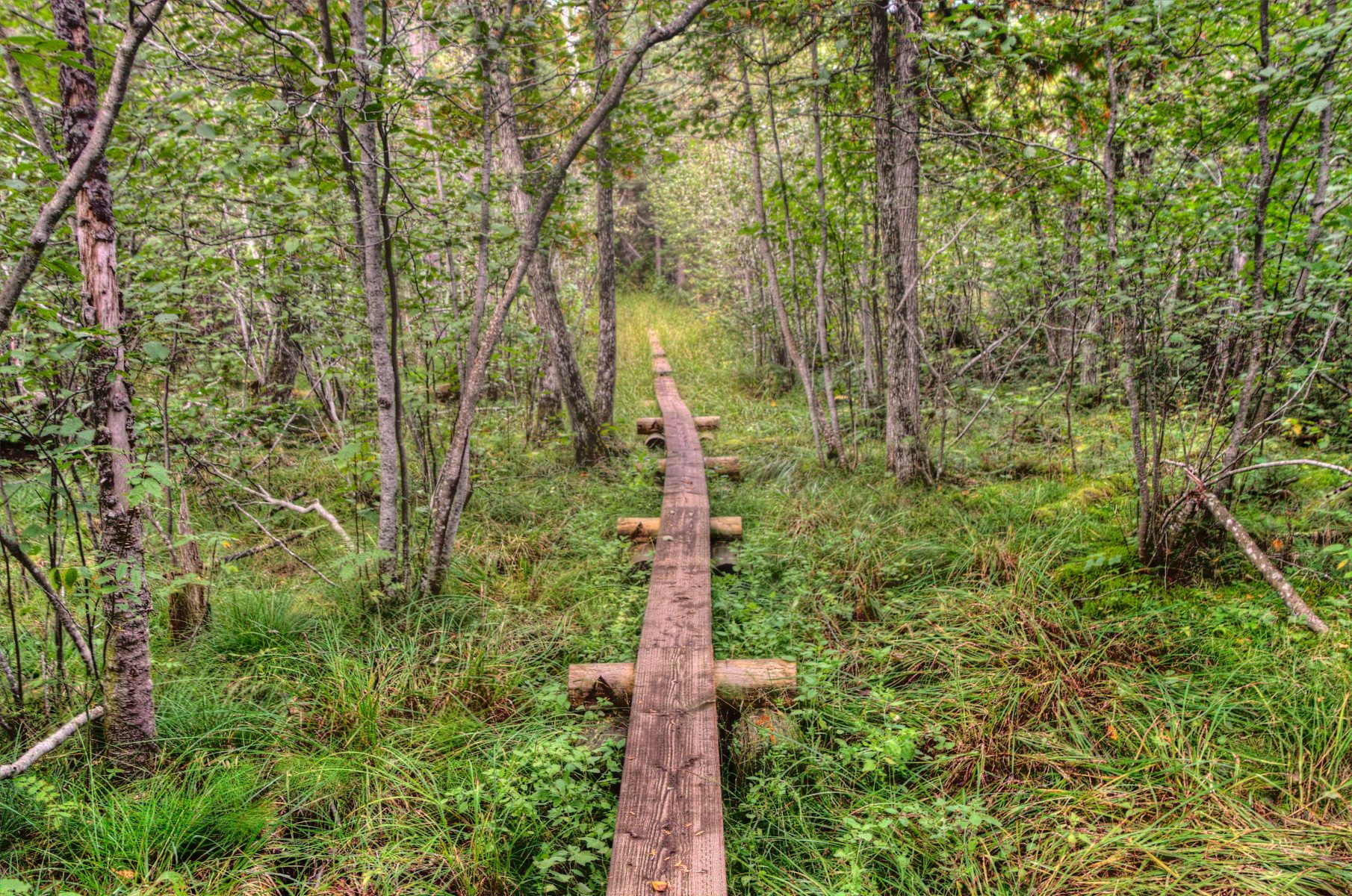
(Photo by Jacob Boomsma / Shutterstock.com)
If you want to take the road less traveled, consider visiting one of the 10 least-visited US national parks.
The 10 Least-Visited National Parks in America
Grand Canyon, Yellowstone, and Yosemite national parks are easily accessible to everyone and you can visit them without extensive planning.
Some adventurers, however, may be drawn to wilderness areas that require more effort (and experience) to visit. The journey is part of the reward.
Here are the 10 least-visited US national parks.
10. Congaree National Park, South Carolina
A relatively new national park, the Congaree National Park in South Carolina saw 145,928 visitors in 2018. It is easily visited by car, just a 20-minute drive from Columbia.

(Photo by Jimmy Gray Photo / Shutterstock.com)
This park is often referred to as a swamp, but is actually a floodplain that is inundated about 10 times a year. There are elevated boardwalk trails throughout the park to allow you to explore this exotic area without the need for expensive gear.
It is a birdwatcher’s paradise, with thousands of species inhabiting the park year-round. At night during the fall and spring, park rangers lead visitors on an “owl prowl,” where you can hear (and hopefully spot) barred owls. They will also point out glowing mushrooms that grow on the cypress trees.
If you have time, you can paddle a canoe through this dense, old-growth floodplain forest. Fishermen find it a paradise, taking a variety of species from the brackish or fresh waters.
9. Wrangell-St. Elias National Park & Preserve, Alaska
Wrangell-St. Elias National Park in Alaska is massive. Everything about this park is huge. For starters, it is the largest national park in the country at 13.2 million acres, making it six times the size of Yellowstone.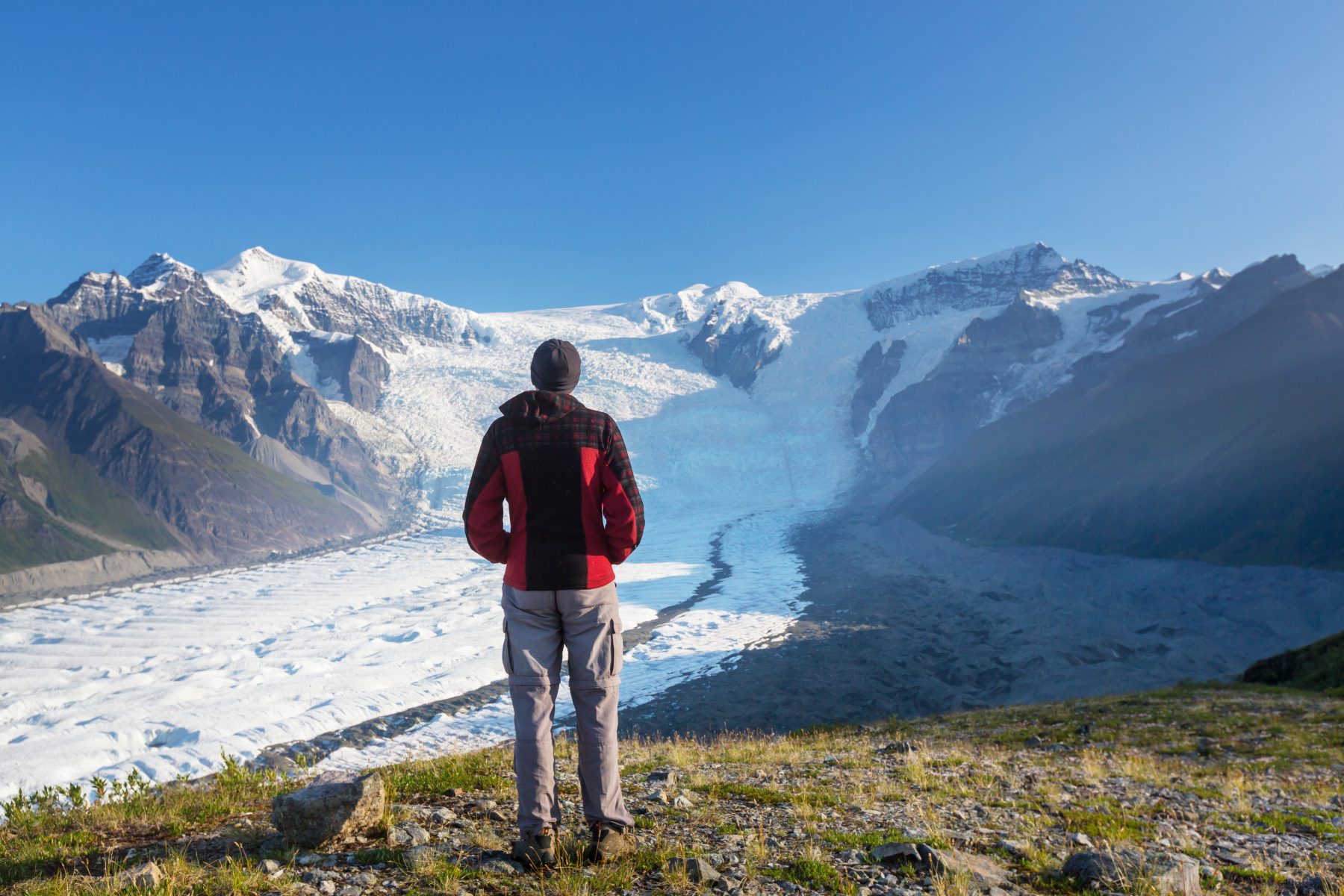
(Photo by Galyna Andrushko / Shutterstock.com)
It contains the tallest coastal mountains in the world and nine of the 16 highest peaks in the United States are inside its boundaries. Mount Wrangell is one of the world’s largest active volcanoes, with smoke visible most mornings.
There are more than 150 glaciers throughout the park, covering more than a third of the park. One, the Malaspina Glacier, is larger than the state of Rhode Island.
The only part of this park that isn’t massive is the visitor numbers, with only 79,450 visitors in 2018, not because it lacks activities or natural beauty but because it is remote. Most of the park can only be reached by boat or bush plane. By car, you can visit many of the visitor centers and reach areas for hiking, climbing, camping or kayaking.
8. Dry Tortugas National Park, Florida
Dry Tortugas National Park is surprisingly remote, about 70 miles from Key West. This park is made up of seven small islands in the Gulf of Mexico. Visiting is only by boat or seaplane, which may account for why it only had 56,810 visitors in 2018. There is a daily ferry to the park, but it is a 2.5-hour ride each way, so plan for an all-day adventure.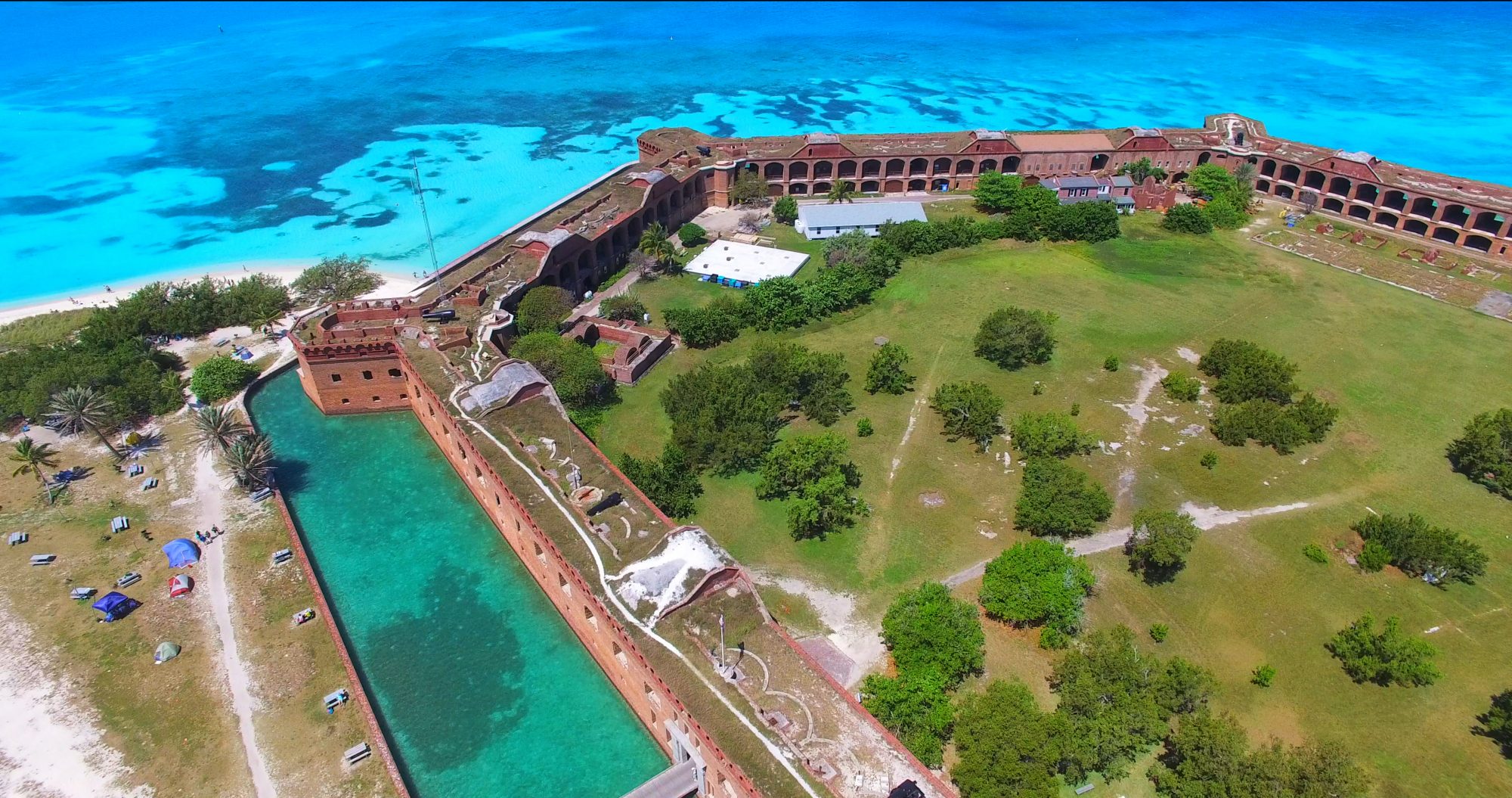
(Photo by Mia2you / Shutterstock.com)
Much of this park is underwater and its protected reefs make it popular for snorkeling and scuba diving. Many divers claim it is the best coral reef you will find in the United States.
Of the seven islands, only two have been developed. The other four are left entirely to nature and are home to rare bird populations like frigates, brown noddy terns, sooty terns and many others.
Garden Key, one of the developed islands, is home to Fort Jefferson, a hexagonal military fort dating back to the 1800s. It was converted into a prison during the Civil War and famously housed one of the men who conspired to assassinate President Lincoln. You can tour the 16-acre fort and even camp overnight inside.
7. Katmai National Park & Preserve, Alaska
Katmai National Park is famous for having the largest population of brown bears in North America. Around 2,000 call this park home.The live-bear cam hosted by Katmai National Park has gone viral in recent years. The camera captures bears feeding on Alaskan salmon in the river as they swim upstream to spawn.
Interest has increased thanks to the bears, but the park is extremely remote and difficult to access, which means that only the most determined travelers will see the bears in person. A mere 37,818 people visited Katmai in 2018. The main visitor center, in the area where you can see the bears feasting on salmon, is accessible via two plane rides. Other parts of the park require a plane ride and a boat trip.
6. North Cascades National Park, Washington
Just three hours by car from Seattle is North Cascades National Park. Because it is so easily accessible, it is hard to understand why only 30,085 visitors checked out this national park in 2018. (I was one of them).

(Photo by SoisudaS / Shutterstock.com)
This park offers stunning mountains, glassy lakes, abundant wildlife and colorful wildflowers. You will be hard-pressed to find more picturesque landscapes than North Cascades National Park. The fact that so few people visit the park each year should be considered another perk because you can experience untouched wilderness that is easily accessible by car (unlike many others on this list).
5. National Park of American Samoa, American Samoa
The only US national park that is south of the equator, the National Park of American Samoa is closer to Australia than it is to the US, which is probably why only 28,262 adventurers explored this national park in 2018.
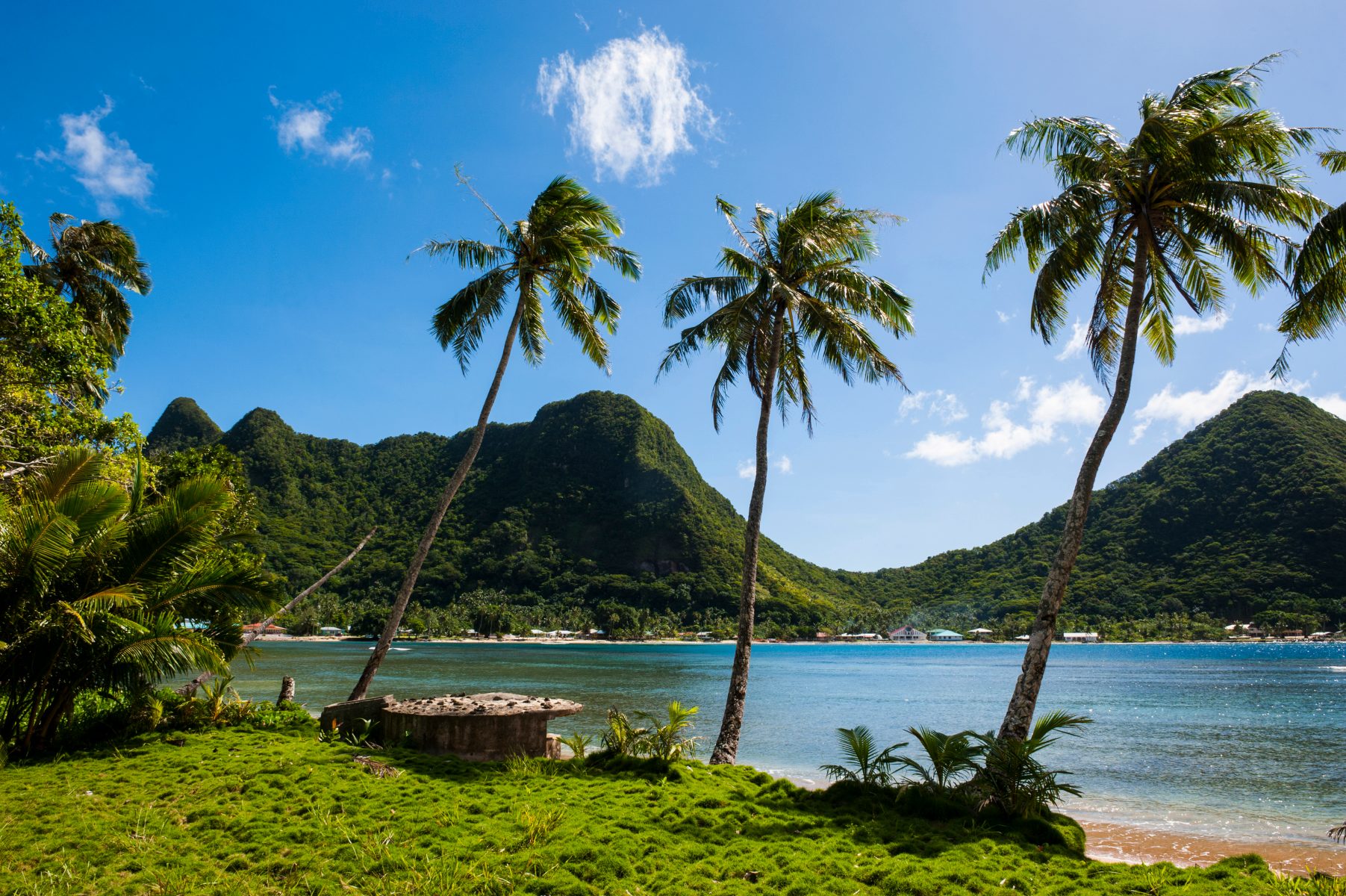
(Photo by Danita Delmont / Shutterstock)
Getting to American Samoa is part of the adventure. It requires a trip to Hawaii and then another 5.5-hour flight over 2,300 miles to Pago Pago in American Samoa.
The park is a tropical rain forest, the only one in the National Park Service. You will find tropical birds and hundreds of tropical plant species only found in this region. The park is also home to the endangered flying fox and the fruit bat with a wingspan the size of a barn owl.
The park consists of three islands, and you can often spot humpback whales just off the coast. Native Samoans still live within the park and the National Park Service offers a Homestay program, which lets you stay with local Samoan families to learn about and experience their culture.
4. Isle Royale National Park, Michigan
Remote wilderness is what makes Isle Royale National Park so famous. This park is a 45-mile-long island in Lake Superior. The park rangers joke that Isle Royale’s 25,798 visitors in all of 2018 is roughly equivalent to the number of visitors that Yellowstone National Park gets in a single day.
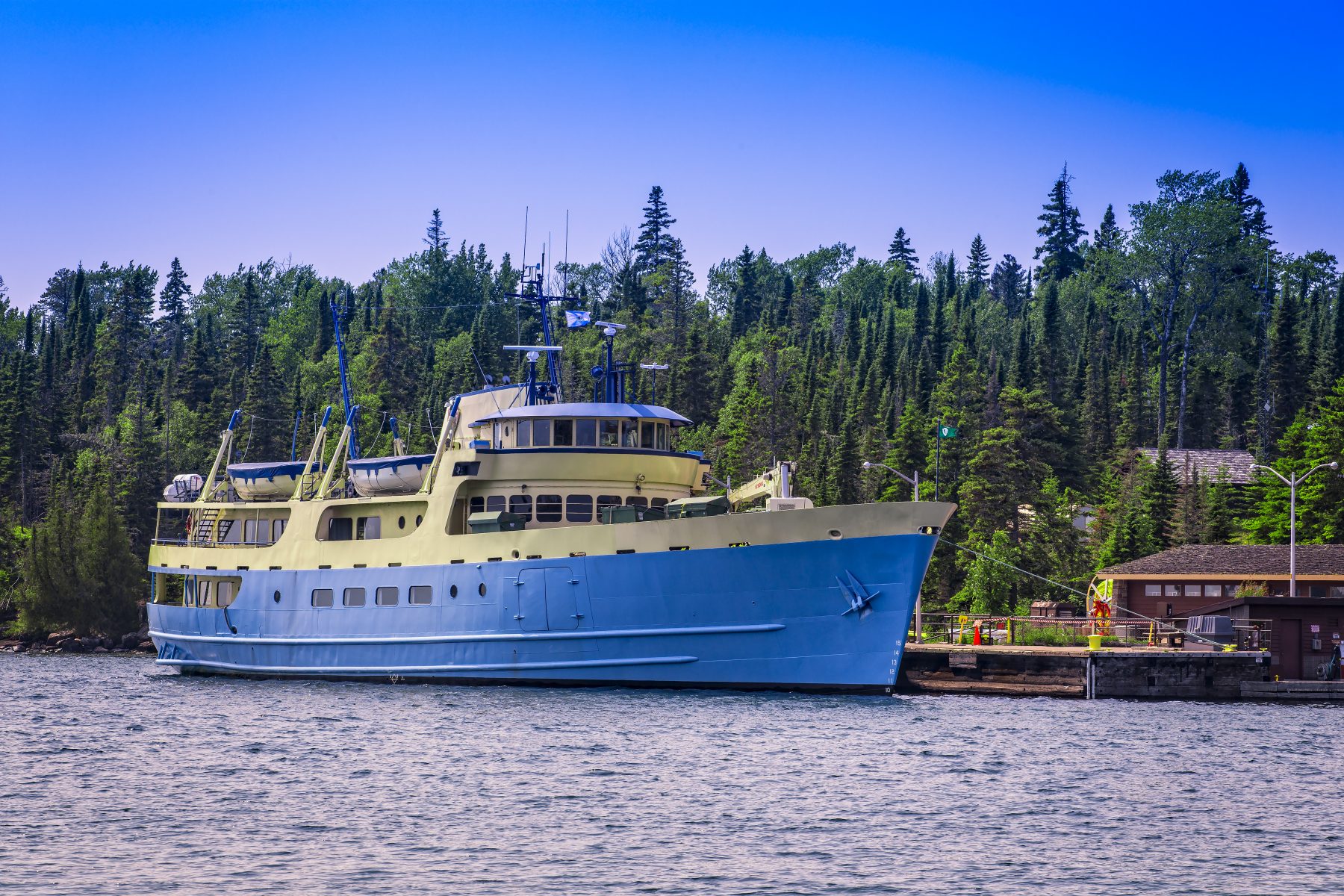
(Photo by Steven Schremp / Shutterstock.com)
Most of the park is designated as a national wilderness area, meaning it has no facilities or human improvements. When visitors are dropped off on the island by boat, they are completely on their own. You must pack in (and carry out) everything that you need.
The wilderness is rough and untamed. Hikers frequently encounter moose and even packs of wolves. You will probably spot beaver while filtering your water from an inland pond, and foxes might pay you a visit to your camp at night. There are wilderness camping spots around the island, but they can not be reserved, so be prepared to keep trekking if your planned destination is already full.
The average visit to most national parks is four hours, but the average visitor to Isle Royale National Park stays for three and a half days. Most explore the island’s 165 miles of trails by backpacking and wilderness camping. However, there are also 400 smaller, satellite islands that can be reached by private or charter boat. Scuba divers can also explore 10 major shipwrecks within the national park’s waters.
3. Kobuk Valley National Park, Alaska
Kobuk Valley National Park is not what most people picture when they think of Alaska. Kobuk Valley is located entirely above the Arctic Circle and yet contains sand dunes.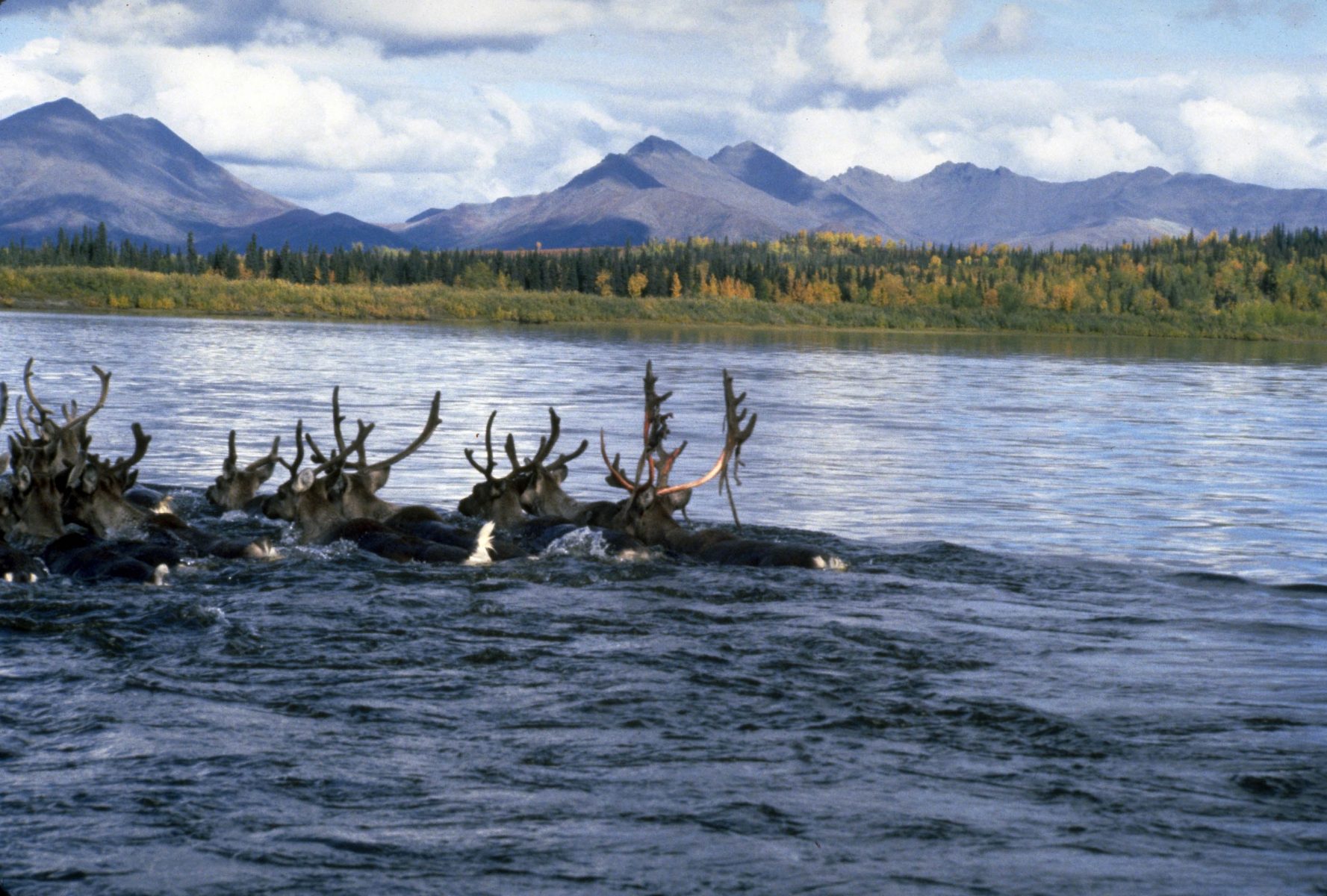
(Photo by Western Arctic National Parklands / Creative Commons)
Thirteen thousand years ago, when a land bridge connected Alaska and Asia, Kobuk Valley was the entrance to North America. It was a grassy tundra in an otherwise ice-filled land. Bison, mastodons and mammoths once roamed this valley. Today, it is home to the one of the largest caribou populations in the world, with more than a quarter million migrating across this park twice a year.
Kobuk Valley doesn’t offer any facilities or trails. Native Iñupiat people still live in this area and hunt caribou for sustenance.
Most of the park’s 14,937 visitors in 2018, chose to see this park by boat. You can raft on the Kobuk river, which cuts through the valley, on a multi-day trip. Brave visitors can hike this remote area, but remember that there are no trails or river crossings. You are entirely on your own.
2. Lake Clark National Park & Preserve, Alaska
According to the National Park Service, Lake Clark National Park preserves the ancestral homelands of the Dena’ina people. It is an intact ecosystem at the headwaters of the largest sockeye salmon fishery in the world and a rich cultural wilderness. You will feel alone staring at glacier-carved valleys and steaming volcanoes that only 14,479 people saw in 2018.
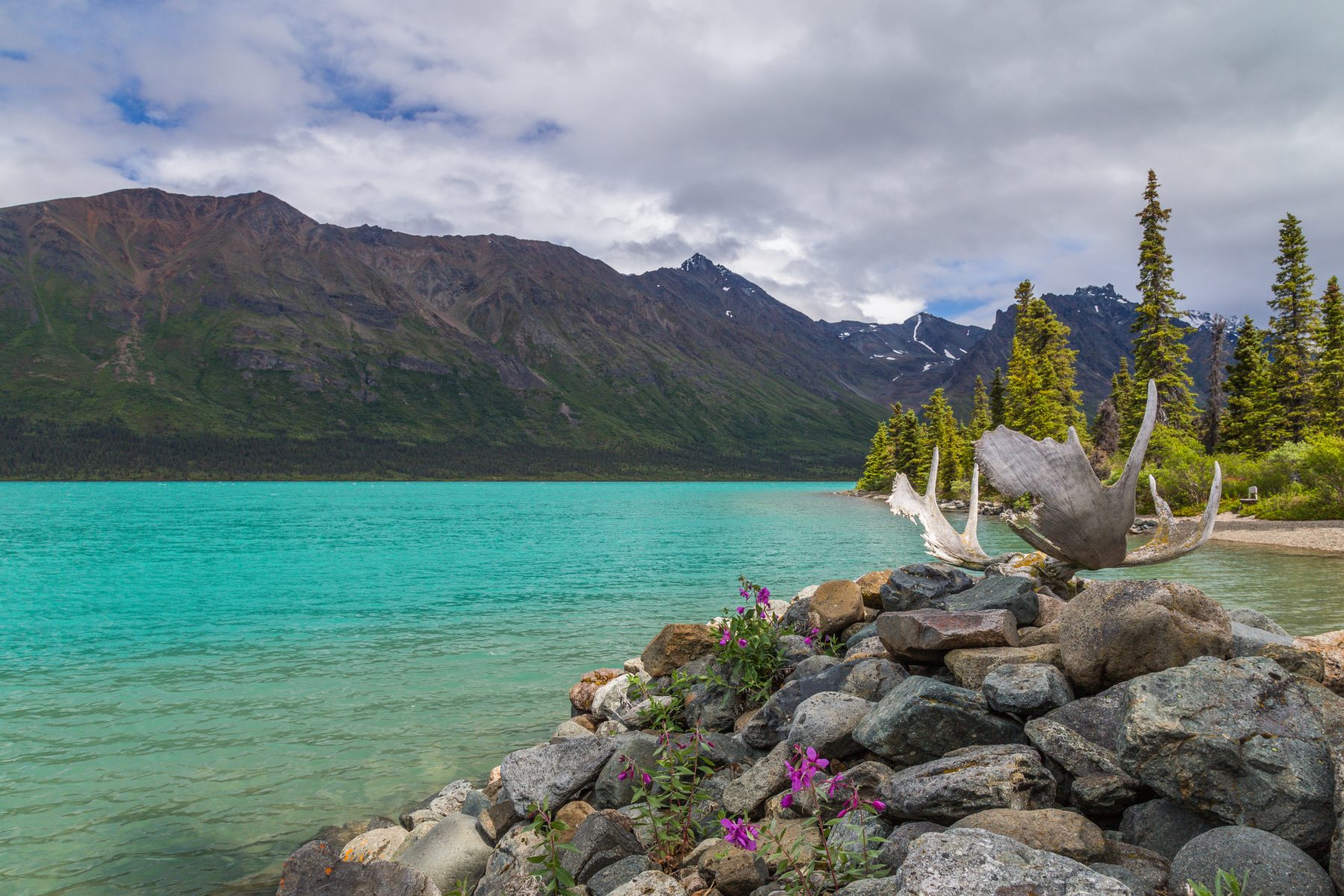
(Photo by National Parked / Shutterstock.com)
Lake Clark is a 42-mile long freshwater lake. It is home to a rich diversity of wildlife, especially brown bears. It is also the northern limit for many of Alaska’s common plant and animal species like Dall sheep, brown bears, and Sitka spruce. It is less than an hour from many populated Alaska cities like Anchorage, Homer and Kenai. Charter plane is the best way to reach this park, although it is also accessible via a long boat ride that travels down Cook Inlet or Kenai Peninsula.
1. Gates of the Arctic National Park & Preserve, Alaska
The name says it all. Gates of the Arctic National Park & Preserve is easily the most remote national park in the US. It is above the Arctic Circle and contains 8.4 million acres of natural beauty.
There are no roads to or from the park and no facilities within park boundaries. You don’t stumble upon Gates of the Arctic National Park; it is a journey you make deliberately and prepare for thoroughly. Only 9,591 visitors in 2018 (26 per day on average) made the deliberate effort to visit the northernmost national park in America.
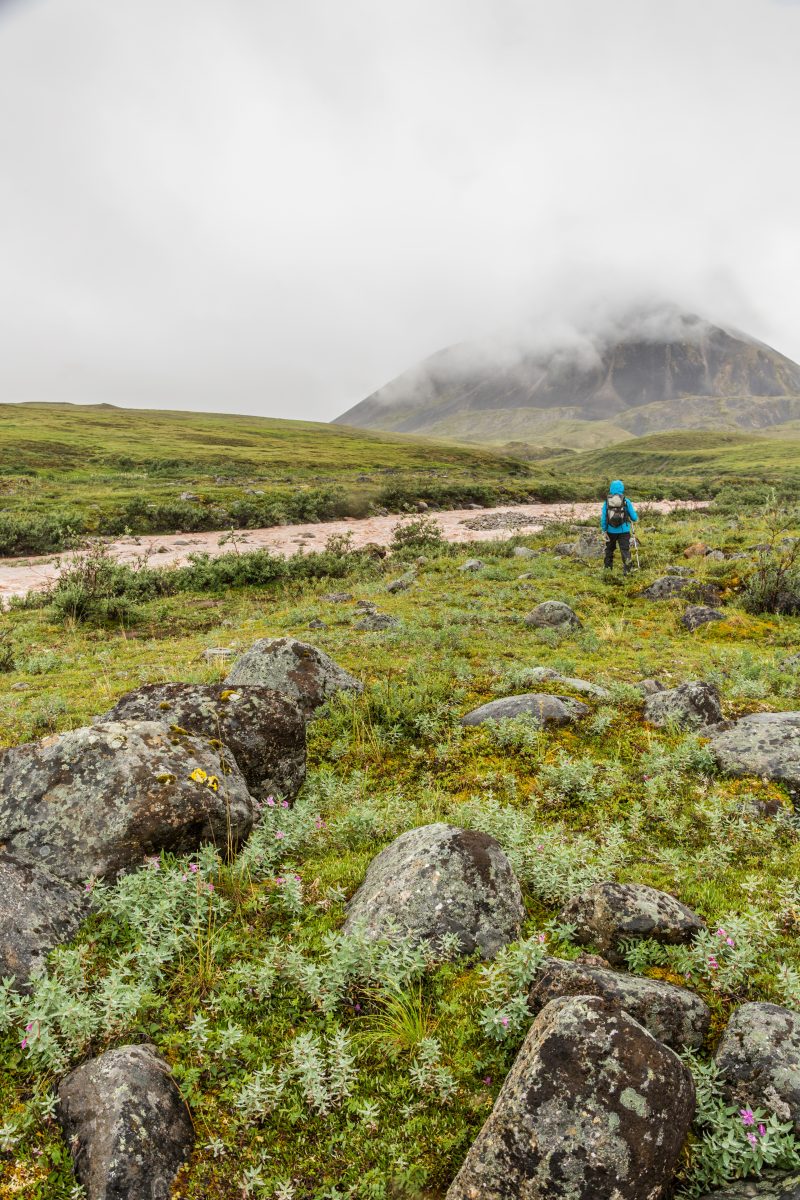
(Photo by inDesign Ethos / Shutterstock.com)
The National Park Service says, “This is a place for discovery and exploration … It is one of the last truly wild places on Earth.” Cell phones don’t work here and help is not available, you are on your own. During the entrance presentation at the visitor center, park rangers warn visitors that they are responsible for their own safety and survival.
Private outfitters and guides offer tours of this park, and the National Park Service generally recommends using these services for all but the most proficient survivalists among us.
Bottom Line
America’s national parks are one of the greatest treasures that we have.
Although many parks receive millions of visitors a year, the 10 least-visited National Parks in America see a tiny fraction of that.
10. Congaree National Park (145,928 visitors in 2018) 9. Wrangell-St. Elias National Park & Preserve (79,450 visitors in 2018) 8. Dry Tortugas National Park (56,810 visitors in 2018) 7. Katmai National Park & Preserve (37,818 visitors in 2018) 6. North Cascades National Park (30,085 visitors in 2018) 5. National Park of American Samoa (28,262 visitors in 2018) 4. Isle Royale National Park (25,798 visitors in 2018) 3. Kobuk Valley National Park (14,937 visitors in 2018) 2. Lake Clark National Park (14,479 visitors in 2018) 1. Gates of the Arctic National Park & Preserve (9,591 visitors in 2018)
Consider marking your calendars and planning a trip to some of these parks in the coming years. See what other Americans are missing out on.
For the latest tips and tricks on traveling big without spending a fortune, please subscribe to the Million Mile Secrets daily email newsletter.Editorial Note: We're the Million Mile Secrets team. And we're proud of our content, opinions and analysis, and of our reader's comments. These haven’t been reviewed, approved or endorsed by any of the airlines, hotels, or credit card issuers which we often write about. And that’s just how we like it! :)
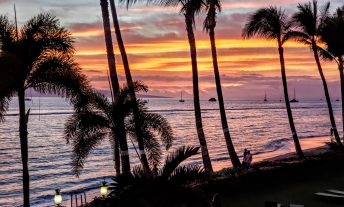





Join the Discussion!